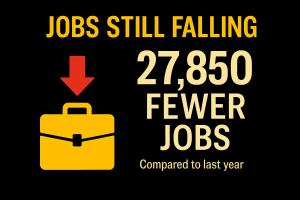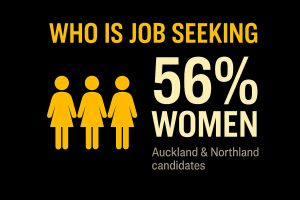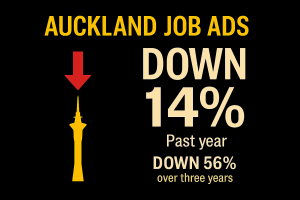Auckland’s Job Market in 2025: Tough Times, Tougher Choices
Key Insights on NZ’s Employment Market August 2025 Edition
The employment landscape in 2025 has been marked by uncertainty, decline, and growing pressure on both jobseekers and employers. Auckland, as the country’s largest labour market, has felt the weight of these challenges most acutely. With fewer roles available, more applicants competing for each vacancy, and some communities disproportionately affected, the road to meaningful work has become steeper than ever. This blog takes a closer look at the numbers, the people behind them, and the shifting demand across industries to understand where the opportunities still remain.
Starting off with harsh statistics
To say 2025 has been a struggle would be an understatement, and that reality has touched nearly everyone. Across the board, things have been tough, and here at Indus we see it firsthand every day. Most recently, Auckland has taken a particularly hard hit, recording an unemployment rate of 6.1%, the highest in the country. This has triggered a wave of desperation, with jobseekers commuting long distances or even relocating in search of work. Compared to this time last year, there are now 27,850 fewer jobs available nationwide. To make matters worse, job advertisements fell by another 3% in June alone. The job market right now is not only competitive, it’s becoming increasingly bleak for those still searching.

That bleakness shows up in people’s stories too. In May, RNZ reported on Auckland jobseeker Allister Benson, who has applied for nearly 500 jobs in the past year after being made redundant three times. Despite 15 years in tech sales, he has broadened his search across multiple industries, only to face ghosting, false starts, and even cases where roles were advertised but already filled. Another applicant, Sharon Hunter, noted seeing 150 people applying for a single role, compared with just a handful pre-Covid. Their experiences illustrate the wider trend: even as some sectors show signs of life, the sheer number of applicants per role makes it harder than ever for individuals to secure stable work.
Who today’s jobseekers are
The latest SEEK Laws of Attraction data for full-time candidates in Auckland and Northland paints a clear picture: jobseekers here are mostly young, urban, and female. Over half (56%) are women, and a combined 63% fall into the 25–44 age range, prime working years where career growth is typically a top priority. Nearly two-thirds (61%) were born overseas, showing just how diverse the talent pool is, while 37% are graduates or juniors, indicating a strong presence of early-career candidates competing for roles.
But behind these numbers lies a tougher reality for some communities. Pacific people are experiencing unemployment at 12.1%, more than double the national average, and analysts say much of this is concentrated among young jobseekers. While labour force participation hasn’t dropped, many young Pacific workers are struggling to secure jobs or access training and education opportunities. This means that for a significant slice of Auckland’s workforce, the challenge isn’t just finding the right role, it’s finding any role at all.

Auckland’s job market snapshot and where demand still is
Fresh data from MBIE’s June 2025 Jobs Online Quarterly Report shows Auckland job ads fell by 14% over the past year, the steepest drop of any major region in the country. Over the past three years, online vacancies in Auckland have fallen a staggering 56%, a decline that has had a huge impact nationally given the city accounts for around a third of all employment.
The sharpest annual declines by industry were in manufacturing (-24%), education (-22%), and hospitality (-21%). Construction and business services also took heavy hits. On the flip side, only primary industries (+17%) and health care (+3%) saw growth over the past year, though both are coming off long-term declines over the last three years.
When you break it down by occupation, the hardest-hit roles in Auckland were sales (-25%), clerical and administration (-22%), and machinery operators/drivers (-21%). Even highly skilled roles weren’t immune, with an 8% drop in postings, but low- and unskilled roles fell the most sharply.
Where the Demand Still Is
Despite the overall slowdown, several roles continue to show resilience. Health care remains one of the few industries to post annual growth, with sustained demand for nurses, aged care workers, and allied health professionals. Primary industries, buoyed by agriculture and horticulture demand, have also recorded steady hiring activity. Call centre and customer service roles have shown recent month-on-month increases, while trades and logistics, though down year-on-year, still make up a significant share of Auckland’s active listings.
For employers, this means the challenge is twofold: competing for talent in the few growth areas, and finding ways to attract candidates into sectors where interest has cooled. For jobseekers, it’s about knowing where the opportunities still exist, and being willing to pivot into industries showing the most demand.

